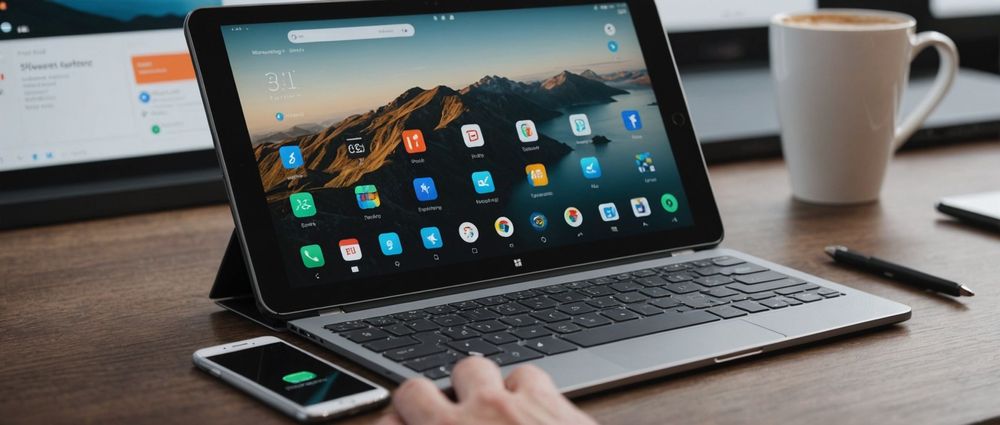Foldable smartphones represent a revolutionary shift in mobile technology, combining the functionality of a tablet with the convenience of a smartphone. With their unique ability to expand and collapse, these devices aim to redefine user experience, providing a versatile platform for multitasking and entertainment. In this article, we’ll explore the intricacies of foldable smartphones, their benefits, various types available, their challenges, and what the future might hold for these innovative gadgets.
Understanding Foldable Smartphone Technology

Foldable smartphones utilize advanced display technology, primarily OLED, which allows screens to bend without damaging the display. This technology is underpinned by innovative engineering, using flexible materials that can withstand thousands of folds. At the heart of these devices are hinge mechanisms that ensure a seamless fold, enabling users to transition effortlessly between phone and tablet modes. As of now, major manufacturers like Samsung, Huawei, and Motorola have already released compelling models, but many other tech companies are also entering this competitive realm.
The key features that distinguish foldable smartphones from traditional ones include:
- Multitasking Capabilities: Users can run multiple apps side by side with a larger screen interface.
- Enhanced Portability: Devices can be compacted for convenience and easily fit in a pocket.
- Greater Screen Real Estate: Larger displays improve media consumption and productivity.
- Innovative Design: A unique form factor that sets them apart from conventional smartphone designs.
- Customization Options: Many foldables offer a range of display modes for different tasks.
The Benefits of Using Foldable Smartphones
Foldable smartphones come with a plethora of advantages that enhance user experience and productivity. One of the most significant benefits is their ability to provide a larger display while maintaining a compact design. This is particularly beneficial for users who enjoy consuming media, as the larger screen allows for a more immersive experience. Additionally, the multitasking capabilities, which allow multiple apps to be open at once, can lead to increased efficiency—particularly important for business professionals and students alike.
Furthermore, foldable smartphones are generally equipped with powerful hardware, similar to traditional flagship devices. This includes robust processors, ample RAM, and impressive battery life, enabling users to enjoy high performance regardless of the device’s form factor. The innovative design also sparks interest, making foldable smartphones not just tools but fashion statements. They are often seen as the epitome of modern technological progress.
Types of Foldable Smartphones

There are several types of foldable smartphones currently available, each catering to different user needs and preferences. The primary categories include:
- Horizontal Foldables: These devices, like the Samsung Galaxy Z Fold series, open like a book, providing a tablet-like experience.
- Vertical Foldables: Models such as the Motorola Razr fold in half like a clamshell, compacting into a pocket-sized form.
- Rollable Phones: A newer concept where the phone screen expands like a roll, offering varying screen sizes as needed.
- Flip Phones: Traditional designs with modern technology, blending nostalgia with innovation.
- Dual-Screen Devices: These phones sport two separate screens connected by a hinge, such as the Microsoft Surface Duo.
Each type has its distinct advantages, making it essential for potential buyers to assess which form factor aligns best with their lifestyle and usage preferences. As technology evolves, we may also see hybrid forms and improved functionality in subsequent releases, further enriching the foldable smartphone market.
Challenges Facing Foldable Smartphones
Despite the excitement surrounding foldable smartphones, there are several challenges that manufacturers and consumers must navigate. One significant challenge is durability; folding and unfolding the device puts strain on the hinges and display materials, potentially leading to wear over time. This concern has led some users to question the longevity and robustness of these devices compared to their traditional counterparts.
Moreover, the software ecosystem is still adapting to fully leverage the unique capabilities of foldable devices. Many applications are not yet optimized to utilize the expansive screens or multiple-window features, resulting in limited functionality. Pricing also remains a barrier, with foldable smartphones typically carrying premium price tags, which may deter budget-conscious consumers.
The Future of Foldable Smartphones
As technology continues to advance, the future of foldable smartphones looks promising. With ongoing investments and research, we can expect enhancements in durability, display technology, and software support, making these devices more appealing and user-friendly. Manufacturers are also exploring diverse form factors and variations, such as foldable tablets and hybrid devices that could set new trends in the industry.
Moreover, as consumer demand for versatile devices increases, we may see a reduction in costs as production scales up, making foldables more accessible to the masses. Consequently, the market could witness an influx of innovative designs and improved user experiences, solidifying foldable smartphones as a staple in our technological landscape.
Conclusion
Foldable smartphones have undeniably carved a niche in the technology market, presenting an intriguing blend of innovation and practicality. Although they come with challenges regarding durability and software optimization, their benefits far outweigh the drawbacks for many users. As the technology matures, we are bound to see developments that not only enhance user experience but also broaden the appeal of foldable devices. Whether you are a tech enthusiast or someone in need of a multifunctional device, the world of foldable smartphones offers exciting possibilities waiting to be explored.
FAQs
1. Are foldable smartphones durable?
While foldable smartphones utilize advanced technology, their durability can vary. Manufacturers are continually improving materials and hinge designs to enhance longevity, but users should handle them with care to minimize wear and tear.
2. What is the average price of foldable smartphones?
The price of foldable smartphones typically ranges from $1,000 to $2,500, depending on the brand and features. As production costs decline, prices are expected to become more competitive.
3. Can I run multiple apps on a foldable smartphone?
Yes! One of the key benefits of foldable smartphones is their multitasking capabilities, allowing users to run multiple apps simultaneously on a larger screen.
4. Which brands offer foldable smartphones?
Major brands like Samsung, Huawei, Motorola, and Microsoft currently offer foldable smartphones, each with distinct features and design options to cater to various preferences.
5. What should I consider when buying a foldable smartphone?
When purchasing a foldable smartphone, consider factors such as screen size, hinge quality, software optimization, and your budget to ensure it meets your needs and preferences.





